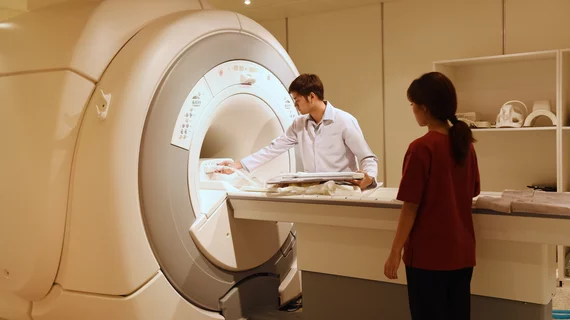MRI accurately detects and reveals characteristics of serous borderline ovarian tumors
MRI performs well in the diagnosis and characterization of serous borderline ovarian tumors (SBOT) and provides details that could help guide providers in their treatment plans.
Women who are diagnosed with these specific ovarian tumors may still be in childbearing age. Therefore, preoperative planning to preserve female reproductive function is crucial.
“Since the treatment of SBOT is different from that of benign and malignant ovarian tumors, and micropapillary SBOT (SOBT-MP) has more aggressive clinical behaviors and a worse prognosis than conventional SBOT (SBOT-C), accurate diagnosis and classification of SBOT prior to surgery are crucial for preoperative surgical planning and postoperative treatment,” corresponding author, Xiaodong Cheng, PhD, with the Department of Gynecologic Oncology at Zhejiang University School of Medicine in China, and co-authors explained.
There's limited research exploring the accuracy of MRI for detecting or characterizing SBOTs, and the few studies that did so had a small pool of patients. This current study, published this week in the European Journal of Radiology, contains a total of 95 patients with pathologically confirmed SBOT, including 77 with SBOT-C and 18 patients with micropapillary SBOT-MP.
In terms of accuracy for diagnosing SBOT, MRI achieved the high mark at 87.6%. Findings were categorized into three patterns: mainly solid, mainly cystic and mixed. The characteristic finding on MRI was branching papillary architecture and internal branching (PA&IB), seen in 69.7% of SBOTS.
Researchers noted that SBOT-MP tended to be more aggressive and patients with SBOT-MP were also more likely to have bilateral tumors, peritoneal implantation, lymph node metastasis, and advanced tumor staging compared to those with SBOT-C. These findings were confirmed postoperatively.
These findings support the use of MRI for patients with SBOT and could improve overall prognosis, the researchers noted.
“The diagnostic performance of MRI was satisfactory with high accuracy,” the experts explained. “The information provided by MRI was consistent with clinicopathological data with high sensitivity in our study, supporting its critical value in preoperative evaluation and subsequent management of SBOT.”

